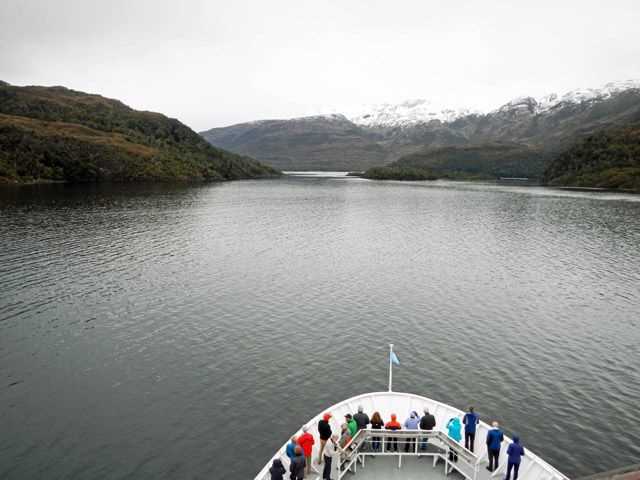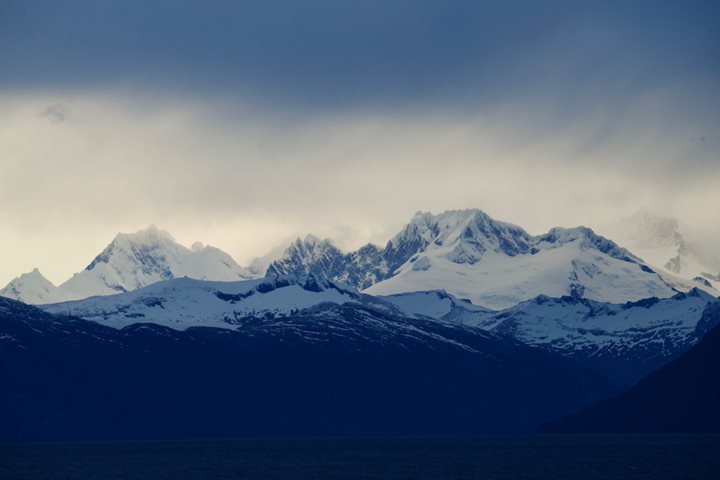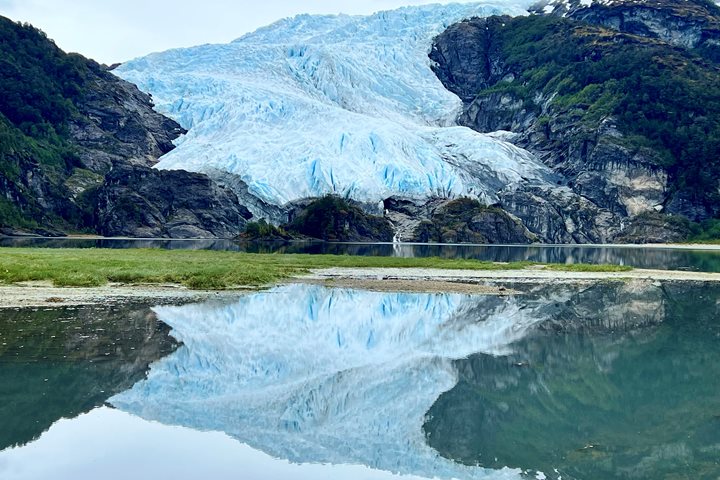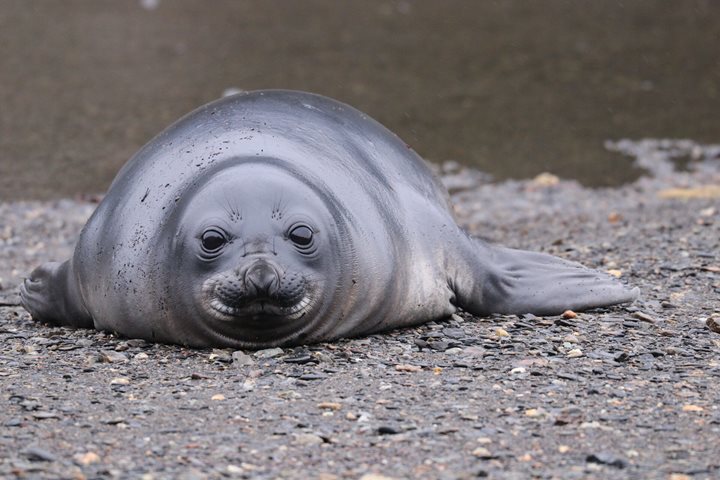After a wonderful day at Torres del Paine National Park yesterday, we got underway this morning from Puerto Natales at 5 A.M. We needed to time our departure carefully in order to arrive at Kirke Narrows, the third narrows through which we need to pass on this voyage, at slack tide at 7:30 A.M. Kirke Narrows is a beautiful setting with snow-covered mountains all around and a glassy sea in the channel. We again sent a Zodiac ahead of the ship to confirm that the tidal current had stopped completely before we proceeded through. A South American sea lion escorted us, and we then entered the west end of the Strait of Magellan. This long, narrow passage through the southern end of South America was first discovered by Ferdinand Magellan in 1520 when he was searching for a passage to the Pacific.
Magellan had a very difficult time finding the passage because he journeyed with mutinous captains of several of the ships in his fleet—he was Portuguese, and they were Spanish, and sailing for the King of Spain, so they considered him something of an intruder in the whole operation. They also wanted to turn around and go back home, but he was determined to press on. Eventually he succeeded in finding the Strait that bears his name.
The strait is quite narrow; sailing ships generally have to tack into the prevailing westerly winds at these latitudes. The relatively small caravels of Magellan’s fleet were finally able to complete the passage and enter the Pacific, but later, large clipper ships of the Great Age of Sailing had to round Cape Horn to find enough sea room to tack against the wind and current of the Drake Passage, often taking weeks or even months to sail west around the Horn and out into the Pacific before turning north.
We were at sea all day today as we needed to cover nearly 300 nautical miles of the Strait to arrive at our destination for tomorrow, the wonderful Karukinka Private Reserve. We used the time to edit photos and attend several presentations by our Global Perspectives guest speaker and members of the natural history staff.







